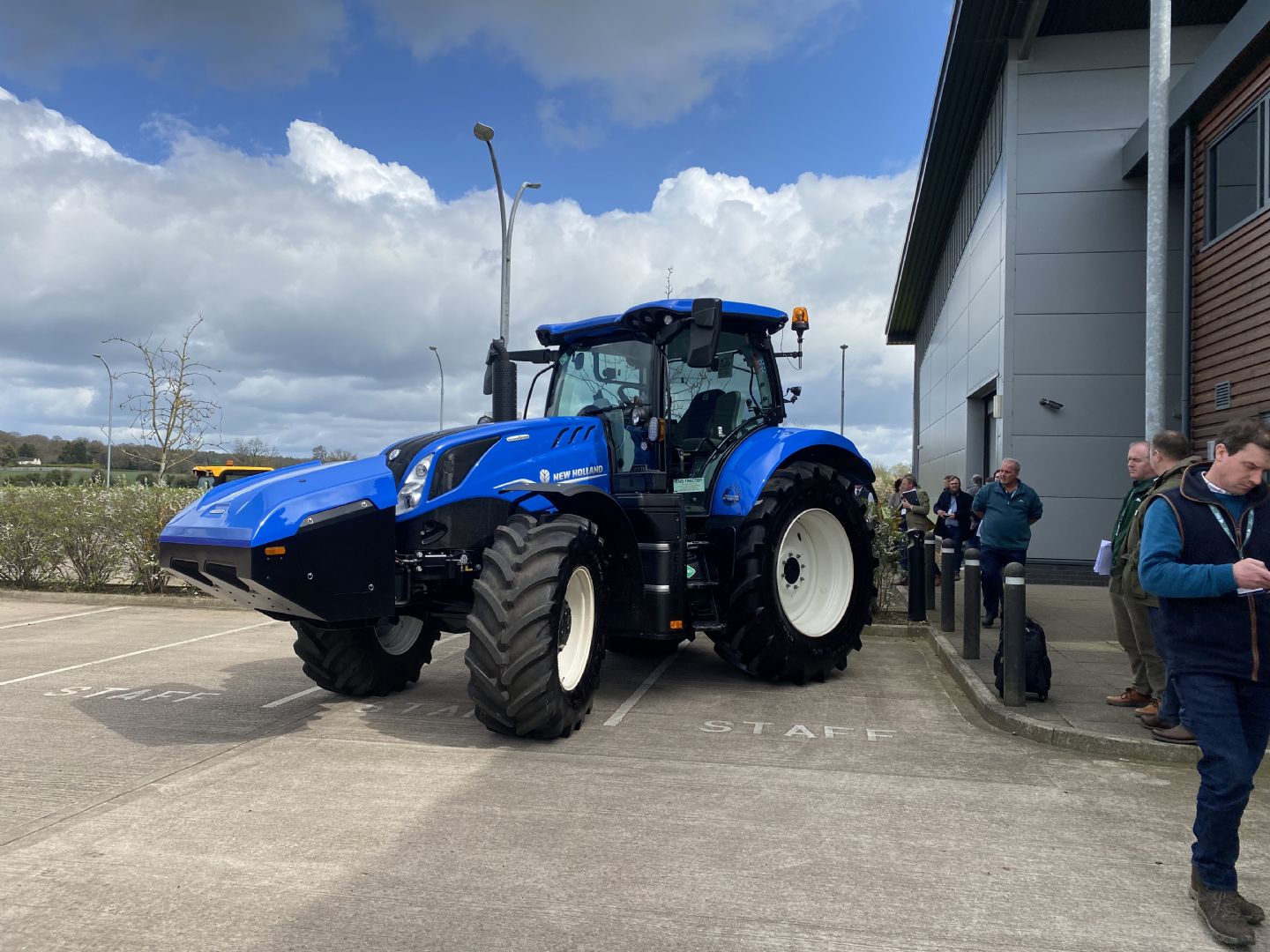
The breakdown of farm-derived wastes such as manures, slurries and crop residues via anaerobic digestion (AD) can be used to produce digestate biofertiliser and energy. In the circular solutions for biowastes technical session at the RASE Farm of the Future: Net Zero in Practice event, Lucy Hopwood from NNFCC, Anna Becvar from Earthcare Technical and Will Llewellyn from Red Kite Management Consulting discussed how the outputs from farm based AD plants can benefit farm businesses.
What is anaerobic digestion?
Anaerobic digestion is the breakdown of organic materials in the absence of oxygen in a sealed container, to produce biogas and a nutrient-rich material called digestate.
Speaking at the Farm of the Future event, Lucy Hopwood explained that biogas is most commonly used in a combined heat and power (CHP) engine to generate heat and power, either for onsite use or the electricity can go into the national grid. The second option is to put the biogas through an upgrading unit which strips out the carbon dioxide and other gases, leaving biomethane. She added that biomethane can go into the national gas distribution network or used as a transport fuel, including in agricultural vehicles.
“Biogas has always been seen as the primary output from AD, and a co-product from AD is digestate,” she said at the event. “But in the farming community digestate is a really valuable output which can support with nutrient management, soil management and water quality.”
Lucy added that the success of AD relies on having a stable, secure, consistent feedstock supply. She shared that feedstock can comprise of products and co-products, for example crop feedstocks, agricultural residues, processing residues, waste materials from food industry and slurries and manures.
The opportunities for farm businesses to benefit from AD
70% of the AD plants operational in the UK are deemed farm-fed facilities, while 30% are taking waste feedstocks from farms. In terms of capacity, only 40% of installed capacity is coming from farm-fed facilities, and 60% from non-farm, indicating that the farm fed facilities are often smaller scale.
When considering opportunities for growth in the industry, Lucy shared that approximately 70% of available processing residues and 60% of food waste arising the UK is already being processed via AD. However, just 50% of agricultural residues and 3% of manures and slurries are processed through AD.
“We currently generate 90 to 100 million tonnes of slurry in the UK and are using about 3 million tonnes of that through AD. In terms of potential for growth, this is a critical opportunity to count towards achieving net zero farming,” said Lucy.
How AD can benefit soil
Following from Lucy’s explanation of AD and the possible opportunities for the growth of farm-based AD facilities, soil scientist and consultant Anna Becvar shared insights into soil nutrient management, including the application of digestate.
She highlighted that to improve soils, it’s imperative to test and observe what is already there. “When using biowastes to improve soils they need to be used correctly. They tend to contain a mix of nutrients, so adding them to pack carbon into the soil also adds nutrients, and we must keep everything in balance,” she said.
In particular, Anna cautioned farmers against overloading phosphorus. She recommended testing both the soils and the biowaste which is being considered, to check it will benefit the soil.
Anna flagged that when applying biowastes to soil, it is important to understand which environmental permitting regulations the material being applied is subject to. In terms of farm-based AD plants, she shared that manures are exempt from any environmental permitting regulations, so the digestate produced in an entirely manure-fed AD plant can be applied as if it is a farm waste.
“By feeding manure into an AD plant you end up with a much better fertiliser, because the AD process converts all the nitrogen and a proportion of the phosphate and potash into more readily available forms,” said Anna.
If an AD plant is only using energy crops as feedstock, the digestate output from the AD plant is classified as a non-waste. Anna explains this means it can be applied in the same way as a product, such as a bag of fertiliser.
Using the gas output from AD as a farm fuel
The final speaker in the circular solutions for biowaste technical session, Will Llewellyn, covered the options for using biomethane from on-farm AD plants. Using alternatively powered farm vehicles will help the farming sector to move away from using fossil fuels, a crucial task to achieve net zero emissions in the sector.
Will shared that using compressed gas as a vehicle fuel is not new, the technology has been around for a long time. He advised farmers considering alternatively powered vehicles to look beyond the emissions coming out the tail pipe, and to instead to focus on ‘well to wheel’ emissions.
To use gas produced via AD for a fuel, the biogas produced in the AD tanks needs to be upgraded to biomethane. This can be done by installing an upgrader parallel to a CHP, with the heat from the CHP being used to power the upgrader. The resulting biomethane then needs to be compressed, stored and dispensed.
Will shares that different gas fuels have built bridges to other gas fuels. “Biomethane is the gaseous fuel of choice now, but we wouldn’t be here now using biomethane if we hadn’t had significant innovation in the compressed natural gas sector. Biomethane and compressed natural gas are interchangeable – ultimately it’s methane,” he said.
He added that compressed hydrogen is becoming adoption ready, but biomethane is building a bridge towards the acceptance of hydrogen.
The whole circular solutions for biowastes technical session has been made available to watch by the School of Sustainable Food and Farming. Whether you missed it or were there on the day and would like to see it again, watch the full session here.




